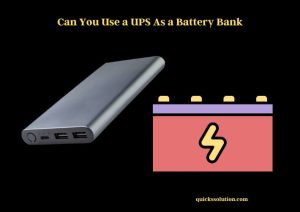Published on: July 29, 2023
Written by John Stevens / Fact-checked by Hashim Manna
The persistence of low voltage despite the installation of a new battery and alternator indicates a potential issue in the charging system. This can be diagnosed and rectified to restore the normal functioning of your vehicle.
Experiencing low voltage even after changing the battery and alternator can be a puzzling scenario. But the battery light still on is a sign that the charging system might be at fault. It could be due to a defective voltage regulator or an issue with the wiring or connections. The alternator’s role is to supply electrical power while maintaining battery charge. If its output is low, the battery might not receive enough power to maintain its charge, leading to the persistent battery light.

In some cases, the alternator might produce low voltage at idle. This usually signals a problem within the alternator itself, such as worn out brushes or a damaged rotor. On the other hand, there might be a voltage drop between the alternator and the battery. This often suggests a problem with the connecting wires or corroded connections. A thorough check-up of the charging system can help detect such issues.
Identifying the cause of low voltage output from the alternator is crucial to solve the problem. Whether it’s the malfunctioning of the alternator or poor connections causing the voltage drop, it requires careful attention. Following the appropriate repair steps or consulting a professional mechanic will help rectify the issue and restore the optimal voltage in your vehicle.
Fundamentals of the Car Electrical System
Core Components and Their Roles
The battery, alternator, and voltage regulator constitute the backbone of your vehicle’s electrical system. The battery powers the car’s electrical components. The alternator recharges the battery while the vehicle is running, ensuring a continuous power supply. The voltage regulator ensures the alternator provides the correct voltage, protecting the battery and electrical accessories from high voltage.
Significance of Voltage in Vehicle Operation
Voltage is the pressure that pushes electric current through the car’s electrical system. It’s like water pressure in your home’s plumbing system. Adequate voltage ensures your vehicle’s electrical parts function optimally, contributing to performance and safety.
Comparing Roles of Battery, Alternator, and Voltage Regulator in a Vehicle
| Component | Role |
| Battery | Powers car’s electrical components |
| Alternator | Recharges the battery while the vehicle is running |
| Voltage Regulator | Manages the alternator’s output to maintain an optimal voltage |
Recognizing Low Voltage Symptoms
Manifestations of Low Voltage
Numerous signs can point to a voltage issue in your vehicle. These may include difficulty starting the engine, dimming lights, a malfunctioning radio, or intermittent function of electrically-powered features. If these issues arise, it’s wise to check your vehicle’s voltage.
Measuring Vehicle Voltage
Measuring your vehicle’s voltage is a straightforward task, requiring a multimeter or voltmeter. For most vehicles, the voltage should be between 13.7 and 14.7 volts when the engine is running. Anything less could indicate a problem.
Common Symptoms and Their Possible Voltage-Related Causes
| Symptom | Possible Voltage-Related Cause |
| Difficulty starting the engine | Low battery voltage can prevent the starter motor from functioning properly |
| Dimming lights | Inadequate voltage can cause lights to dim or flicker |
| Malfunctioning radio | Electrical components like the radio need a stable voltage supply to work correctly |
Root Causes of Low Voltage
New Components Failing: Battery or Alternator
Even new batteries or alternators can fail. Faulty manufacturing, damage during installation, or incompatible components could lead to low voltage. It’s essential to investigate thoroughly if voltage issues persist despite new components.
The Impact of Wiring Issues
Damaged or corroded wiring can cause resistance, lowering voltage. Poor connections and ground faults are common culprits that can lead to voltage drops in your vehicle’s electrical system.
The Potential Role of the Voltage Regulator
The voltage regulator manages the alternator’s output. If it malfunctions, the alternator can produce too much or too little voltage, leading to various issues, including low voltage symptoms.
Detailed Analysis of Component Failure
New Battery and Voltage Issues
Defective manufacturing or improper handling can cause a new battery to function poorly. Not all batteries are created equal. Some may offer lower quality or compatibility issues with your vehicle, leading to inadequate voltage.
New Alternator and Voltage Issues
Even new alternators can be defective or incorrect for your vehicle. A poorly functioning alternator will fail to recharge the battery adequately, leading to persistent voltage issues.
Component Analysis – Possible Failures and Their Effects on Voltage
| Component | Possible Failure | Effect on Voltage |
| Battery | Defective or incompatible | Can lead to inadequate voltage |
| Alternator | Defective or incorrect for vehicle | Inadequate recharging of the battery resulting in low voltage |
Steps to Rectify the Low Voltage Problem
Repairing or Replacing a Faulty Battery or Alternator
If you’ve identified the battery or alternator as the issue, your best bet is repair or replacement. Ensure any new components are correct for your vehicle to avoid further issues.

Addressing Wiring Problems
If you have damaged or corroded wires, replacement is typically the best option. For poor connections or ground faults, cleaning and tightening connections can often solve the problem.
Correcting Voltage Regulator Issues
If the regulator is faulty, it may need replacement to solve the voltage issues. Consult a professional to ensure the correct part and installation.
Prevention Measures for Low Voltage Issues
Maintenance Routines to Forestall Voltage Issues
Regular maintenance is vital to prevent voltage problems. This can include cleaning and tightening electrical connections, checking the battery and alternator regularly, and promptly addressing any signs of corrosion or wear.
Role of Quality Parts in Maintaining Optimal Voltage
Not all car parts are made equal. Choosing high-quality components can go a long way in preventing voltage issues. This includes the battery, alternator, and even smaller parts like fuses and wires. Quality parts are more likely to function correctly and last longer, giving you peace of mind and potentially saving you money in the long run.
FAQs
Can a New Alternator and Battery Still Not Charge Properly?
Yes, a new alternator and battery can still fail to charge. This could be due to manufacturing defects, improper installation, or incompatibility with the vehicle’s electrical system.
How Can I Do a Voltage Drop Test on an Alternator?
You can perform a voltage drop test on an alternator using a digital multimeter. Connect the multimeter to the alternator’s positive and negative terminals while the engine is running and observe the voltage. A reading less than the battery voltage can indicate a problem.
Why Is the Voltage Low at Idle?
Voltage can be low at idle due to several factors including a worn-out serpentine belt, a bad voltage regulator, or issues with the alternator. It can also occur if the idling speed is too low, causing the alternator to produce less power.
What Causes Low Battery Voltage Even With a New Battery and Alternator?
Low battery voltage with new components can be a result of wiring issues, a malfunctioning voltage regulator, or faulty new parts. Even new components can have manufacturing defects or get damaged during installation.
Does a Voltage Drop Between the Alternator and Battery Indicate a Problem?
Yes, a significant voltage drop between the alternator and battery can indicate an issue with the charging system. This might be due to resistance in the charging circuit caused by poor connections or corroded wires.
Why Is My Alternator Dropping Voltage?
An alternator may drop voltage due to internal damage, a faulty voltage regulator, or a worn-out serpentine belt. It’s advisable to have a professional check the alternator if voltage drops persistently.
What Causes Voltage Drop in a Car?
Voltage drop in a car can be caused by a variety of factors including corroded or loose connections, bad grounds, overloaded circuits, or deteriorating wiring. Regular maintenance can help identify and resolve these issues promptly.
References
- “Automotive Handbook”, Bosch – An excellent resource for understanding your vehicle’s electrical system, including the roles of different components and troubleshooting issues.
- “Your Car Electrical System”, Motorologist.com – A straightforward, easy-to-read guide on car electrical systems, perfect for beginners. Link
- “How Alternators Work”, HowStuffWorks – A detailed explanation of how alternators function, why they’re crucial, and what can go wrong. Link
Additional Resources
- “Auto Repair For Dummies”, – A beginner-friendly guide to auto repair, including understanding and troubleshooting electrical issues.
- “Understanding Your Car’s Electrical System”, ACDelco Knowledge Center – A more advanced guide on car electrical systems, including diagnostic and repair information. Link
- “Basic Automotive: A Beginners Guide To Automotive Repair”, Udemy – An online course covering all aspects of automotive repair, including the electrical system. Link
Armed with this knowledge and the right resources, you should be well-equipped to tackle the issue of low voltage, even with a new battery and alternator. The key is to systematically rule out potential causes, leaving no stone unturned in your quest for a well-functioning vehicle. Happy motoring!
Read more:
- Jeep JL Auxiliary Battery Not Charging: Causes & Solutions
- Luminox Watch Not Working After Battery Change
- Mower Dies When Battery Disconnected: A Detailed Analysis
- STIIIZY Battery Not Working: Specific Problems & Corresponding Solutions
- Confronting “Start Stop Not Ready Battery Protection Mode” Alert




